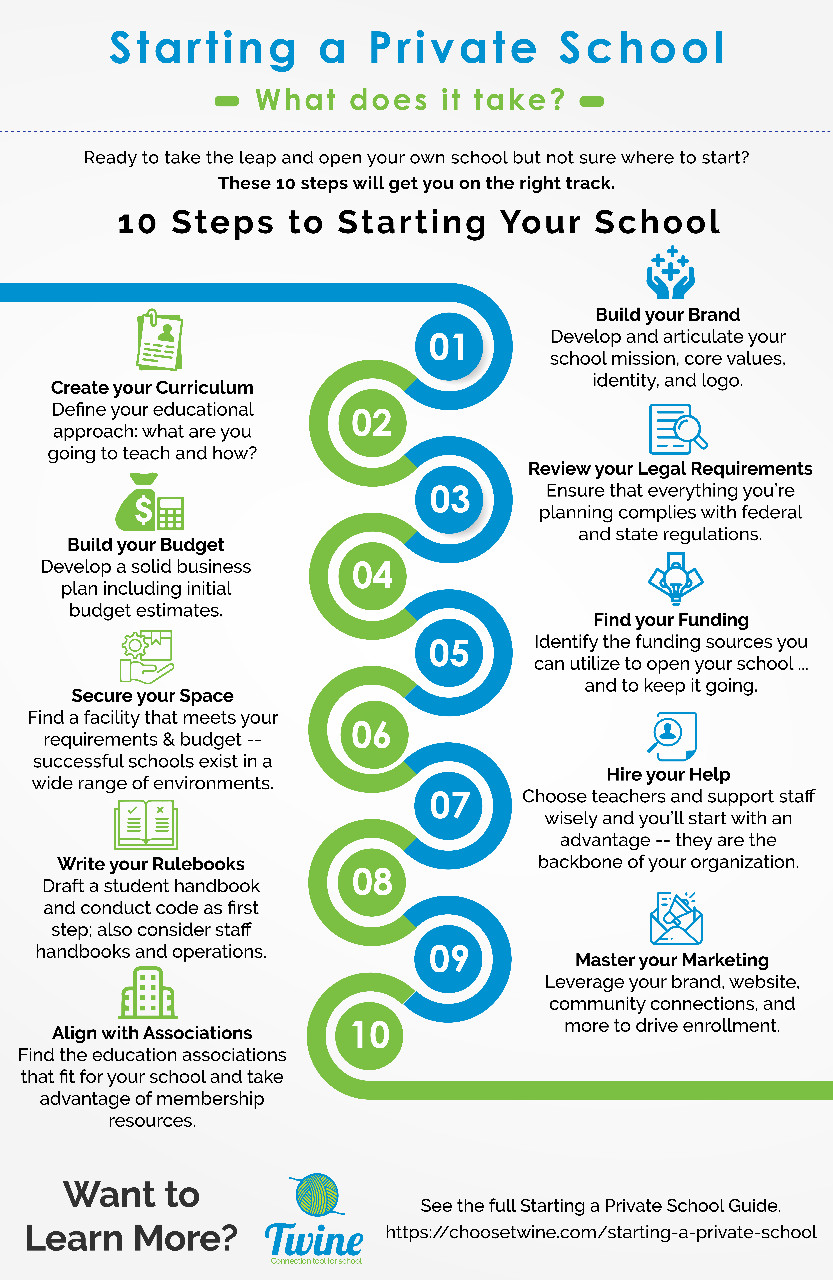The pursuit of education is a cornerstone of a thriving society, and the establishment of private schools plays a crucial role in expanding educational opportunities for our youth. If you harbor a desire to create a learning sanctuary that fosters academic excellence, character development, and the pursuit of knowledge, then the path to starting a private school in Texas may well be yours to tread. This comprehensive guide will illuminate the intricacies of this undertaking, equipping you with the essential knowledge and insights to navigate the journey towards your educational vision.

Image: pattentitle.com
Private schools offer a distinctive educational model that caters to the specific needs of students and families. They provide greater autonomy in curriculum design, instructional methods, and the ability to shape a school’s ethos. In Texas, the establishment of a private school is a multi-faceted process governed by state regulations and best practices in education. By meticulously following the steps outlined in this guide, you will gain a comprehensive understanding of the legal, financial, and operational requirements to bring your vision to life.
Laying the Legal Foundation: Incorporation and Governance
The first step in establishing a private school in Texas is to incorporate your institution as a legal entity. This can be done by filing Articles of Incorporation with the Texas Secretary of State. The articles should clearly define the school’s mission, purpose, and governance structure. It is advisable to seek legal counsel to ensure that the articles of incorporation are compliant with all applicable laws.
Once incorporated, the school must establish a governing body, typically in the form of a board of directors. The board is responsible for overseeing the school’s operations, ensuring its financial stability, and setting policies that align with its educational mission. The board should comprise individuals with diverse backgrounds, expertise, and a shared commitment to the school’s vision.
Navigating Financial Planning: Revenue Streams and School Financing
Securing adequate funding is paramount to the sustainability and success of your private school. Tuition fees typically constitute the primary source of revenue, but schools may also explore additional income streams such as grants, donations, and partnerships with businesses or organizations. Creating a detailed financial plan that outlines projected expenses, revenue sources, and strategies for managing cash flow is essential.
In addition to tuition revenue, private schools in Texas are eligible for certain forms of state funding, including the Textbook Loan Program and the Special Education Cooperative Services Program. Exploring these funding opportunities can provide additional financial support for your school.
Building a Campus: Physical Infrastructure and Facilities
The choice of a physical location for your school is a critical decision that will impact its accessibility, visibility, and overall ambiance. Once a site has been selected, the next step is to secure the necessary permits and approvals from local authorities, including zoning and building permits. The design and construction of the school building should prioritize safety, functionality, and the creation of inspiring learning spaces.
In addition to classrooms, a private school campus should include essential facilities such as a library, administrative offices, a gymnasium or athletic fields, and dedicated spaces for extracurricular activities. Careful planning and attention to detail will ensure that the school’s physical environment supports and enhances the educational experience.

Image: choosetwine.com
Crafting a Curriculum: Defining Educational Philosophy and Learning Outcomes
The heart of a private school lies in its curriculum, which defines the educational philosophy, learning objectives, and instructional methods that will guide the students’ intellectual and personal growth. The curriculum should be aligned with the school’s mission and tailored to the specific needs of the student population it serves.
Developing a curriculum involves carefully selecting subjects, determining the scope and sequence of instruction, and identifying appropriate teaching methodologies. The curriculum should be regularly reviewed and updated to ensure that it remains relevant, engaging, and effective in meeting the evolving educational needs of students.
Recruiting and Retaining a Superior Faculty: Building the Educational Team
The faculty is the cornerstone of any educational institution, and their dedication, expertise, and ability to inspire young minds are essential to the success of your private school. The recruitment process should focus on identifying educators who not only possess strong academic credentials but also share the school’s values and educational philosophy.
Creating a positive and supportive work environment for teachers is crucial for retaining a talented faculty. This includes providing competitive compensation and benefits, opportunities for professional development, and a culture of collaboration and respect. Building a strong team of educators will ensure that students receive a high-quality education and are well-supported in their academic endeavors.
Marketing and Outreach: Building Brand Awareness and Enrollment
Once your school is established, it is essential to implement a comprehensive marketing and outreach strategy to raise awareness about your institution and attract prospective students. Develop a compelling brand identity that reflects the school’s unique value proposition and differentiates it from other educational options.
Utilize a combination of marketing channels, including traditional advertising, digital marketing, and community outreach programs. Attend local events, partner with community organizations, and create a strong online presence to engage with potential families and showcase the benefits of your private school.
Ensuring Accreditation and Quality Standards: Maintaining Educational Excellence
Accreditation is a voluntary process that provides external validation of a school’s educational quality and adherence to established standards. Seeking accreditation from recognized organizations, such as the Texas Private School Accreditation Commission (TEPSAC), demonstrates your commitment to excellence and provides assurance to families that your school meets rigorous educational criteria.
Maintaining high standards of education requires ongoing self-assessment and continuous improvement efforts. Regularly evaluate your curriculum, teaching practices, and student outcomes to ensure that the school is meeting its educational goals. Seek feedback from students, parents, and educators to identify areas for improvement and ensure that your school remains a beacon of educational excellence.
How To Start A Private School In Texas
Embrace the Journey: A Rewarding Endeavor for Education and Community
Establishing a private school in Texas is a challenging yet profoundly rewarding endeavor that requires dedication, careful planning, and a unwavering commitment to educational excellence. By meticulously following the steps outlined in this guide, you will gain the knowledge and insights necessary to navigate the legal, financial, and operational complexities of this undertaking.
Your private school has the potential to become a beacon of learning, a sanctuary where young minds are nurtured and ignited with a passion for knowledge. It is an opportunity to shape the educational landscape of Texas and contribute to the intellectual and personal growth of future generations. Embrace this journey with enthusiasm and determination, and you will undoubtedly create a vibrant and thriving private school that will make a lasting impact on your community and beyond.